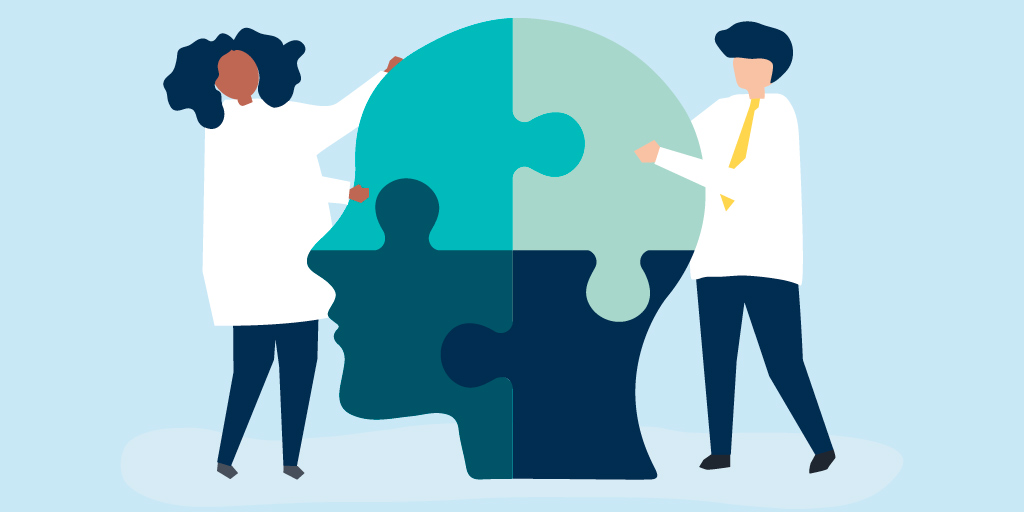
In the world of education, the terms trauma informed, trauma sensitive, and trauma invested have come to the forefront. While all these terms are very similar in nature, the importance of learning and understanding trauma is key to the success of our students. Google defines trauma as a “deeply distressing or disturbing experience.” When this type of experience happens to a child, it can affect brain development, which can impede learning as well as mental and physical health.
I recently read a great book, Relationship, Responsibility, and Regulation: Trauma-Invested Practices for Fostering Resilient Learners by Kristin Van Marter Souers with Pete Hall. It had some great insight about trauma along with ways to help our students become successful. For starters, it is important to learn the terms upstairs brain and downstairs brain, and to teach these to our students. The upstairs brain is when students are functioning in the prefrontal cortex, where reasoning and learning can happen. The downstairs brain is that fight, flight, or freeze place in the brain: the limbic system.
Getting Students in the Upstairs Brain
Our goal as educators is to have our students operating in their upstairs brain so optimal learning can occur. However, the problem occurs when we have students who have suffered trauma and are in the downstairs brain—this is where we see different behavior problems play out in the classroom such as being disrespectful, shutting down, being violent, etc. These behaviors can wreak havoc in our classrooms and can often leave us teachers feeling overwhelmed, frustrated, and completely drained.
But fear not, fellow teacher friend! There are some things we can do to help these struggling students:
Empathy: It is so important that we learn about our students’ trauma and build empathy. Most of us didn’t get into education for the money—we got into this field because of our love of children and passion for learning. And our most difficult students need our love the most. We need to stop thinking of them as behavior problems and try to find out the problems that cause the behaviors. It may not be easy, but it’s important to find out. Once we have empathy for our students’ situations, we can be better prepared to help them.
Relationship: I am a big advocator for building relationships with your students and their families. I firmly believe this is one of the most important traits of a successful teacher. Students need to feel safe, welcomed, and loved. Parents need to feel safe, welcomed, and loved as well, and it’s up to us to make it happen. Create a warm and inviting classroom. Smile and greet your students each day. Listen to what they have to say by making eye contact and responding to their comments. Be kind and encouraging. Offer appropriate physical contact like high fives, fist bumps, or a hug. Call parents from day one to let them know how excited you are to be working together to ensure their child’s success. Tell parents positive things about their child and provide ongoing feedback. Once an earnest relationship is built, your students will feel valued and want to perform in their upstairs brain because they won’t feel threatened or unsafe. I always end my day with a class meeting or circle to talk about the positive things about our day and discuss what tomorrow will bring, then I tell them I love them. No matter what their homelife may be like, they know they have a safe place where they are loved to return the next day.
Responsibility: Giving students who have experienced trauma a sense of responsibility can be empowering and a great way to teach self-reliance. This concept is really two-fold. We need to teach students to be responsible for their own actions as well as providing opportunities in which students can control. The key point being that we need to teach responsibility. It is important for students to learn that they can be in control of themselves. Teaching positive self-talk, problem-solving skills, and having predictable routines and schedules can help.
When my students have a conflict, I always have all parties involved talk to me about what happened, and I always listen without jumping to conclusions. Then I will often ask my students how they felt during the incident in front of the other students so they can hear/see the consequences of their actions. It can be pretty powerful to hear it from a peer rather than an adult. With younger kids, I have even had them use puppets to reenact the incident and then they problem solve to make it a different ending. Having a class job chart, having students set their own goals, and providing opportunities for flexible seating will also allow students to feel a sense of control and self-worth.
Regulation: Honestly, I find this concept the most difficult because it is about teaching students to regulate their emotions. You can build the relationship and teach responsibility, but once students enter the downstairs brain, it can be very hard for them to self-regulate. Most of us have a safe place in our classrooms where students can go to reset with a soft ball to squeeze or a pinwheel to blow for deep breaths, which is especially vital for our students who have experienced trauma. However, I have found that when students are in the downstairs brain, sometimes it’s too late to get them to the safe spot.
This is where teaching the tools to self-regulate before students enter that state is so important—as time goes on, they will begin to use those skills independently. Playing soothing music, providing a weighted pad or pencil, allowing students to get a drink of water, or even washing their face can calm them down. Also, providing brain breaks so students can move around is very effective. Teaching yoga stretches, cross-lateral exercises, dancing, and even swinging on a swing can really help students learn to self-regulate. The more opportunities we can provide for our students to learn regulation, the more likely they are to use these strategies on their own.
Trauma is real and it is up to us to help our students navigate during this difficult time. By building relationships and teaching responsibility and self-regulation, we can empower them to overcome. As educators, we need to have the mindset that all of our students are worthy and capable of learning—even the most challenging ones. If we are intentional about implementing these strategies, our students will maintain a positive outlook about school and themselves, which will lead to success!
For more educational tips and trends delivered to your inbox all summer long, be sure to subscribe to the Educator blog.





